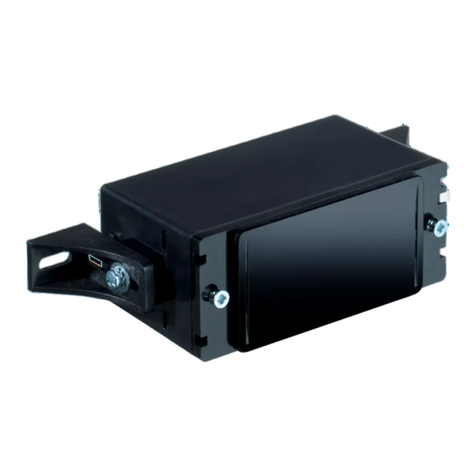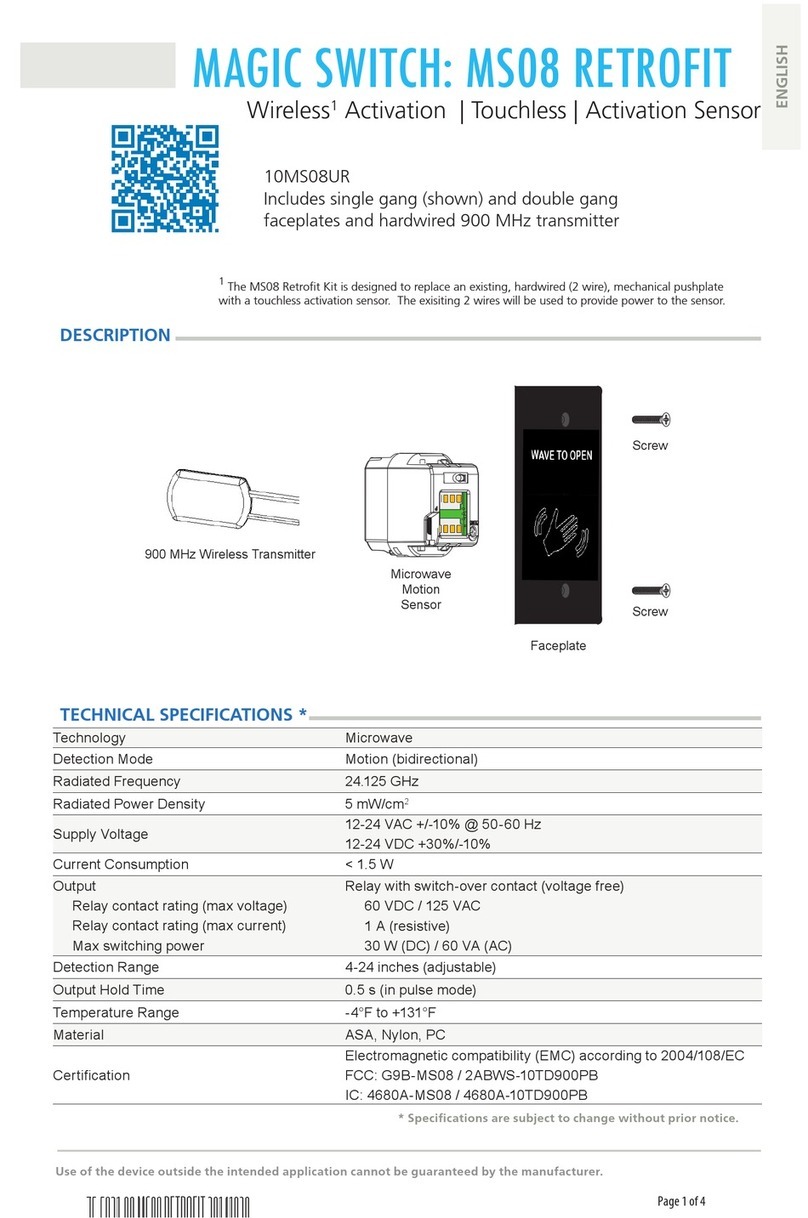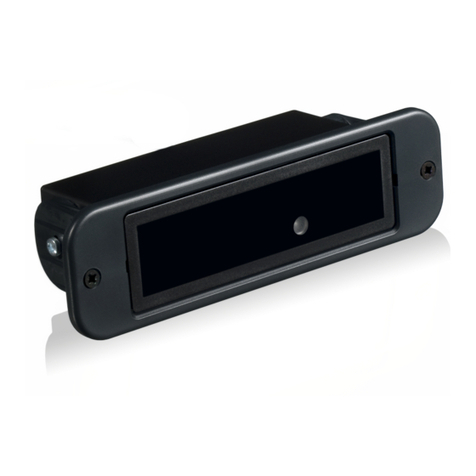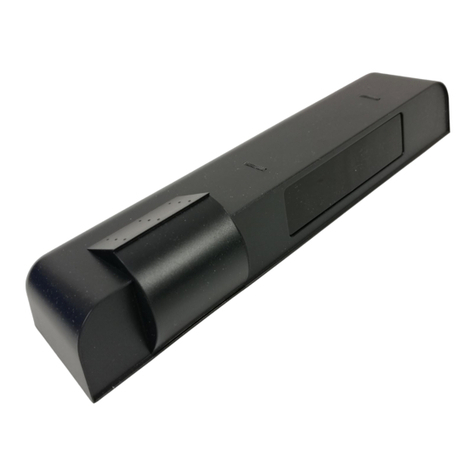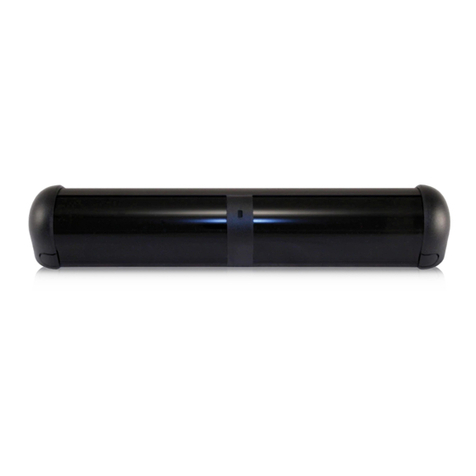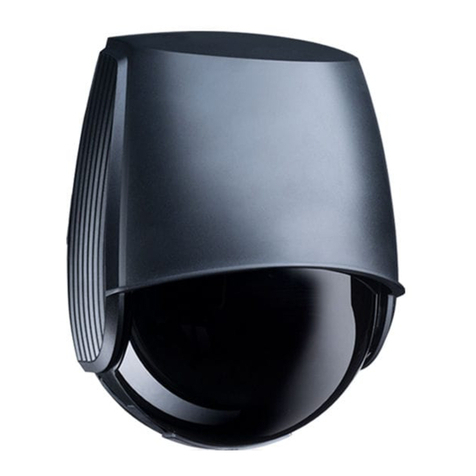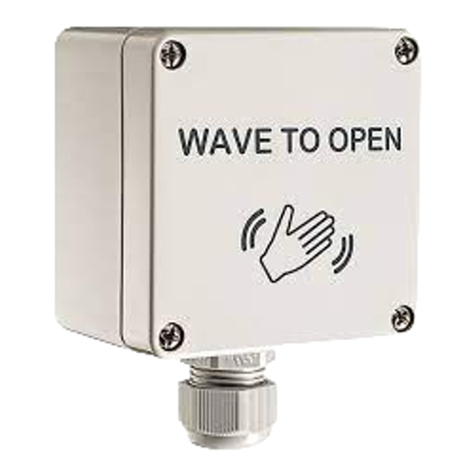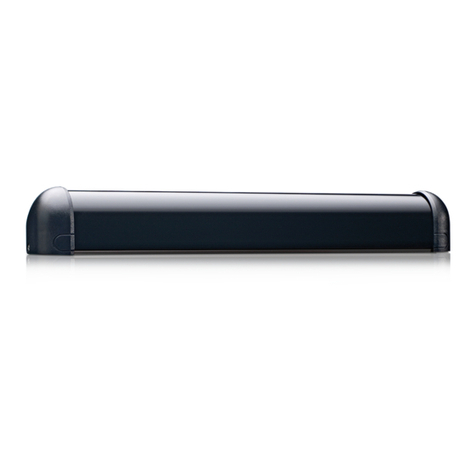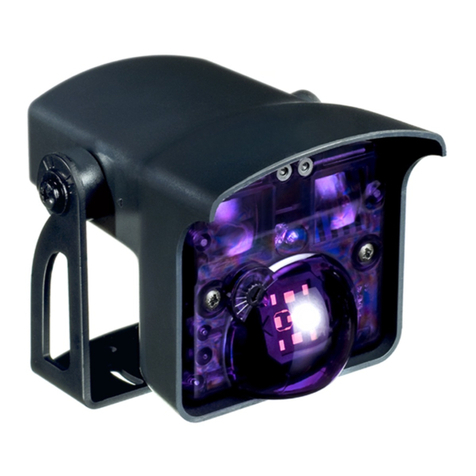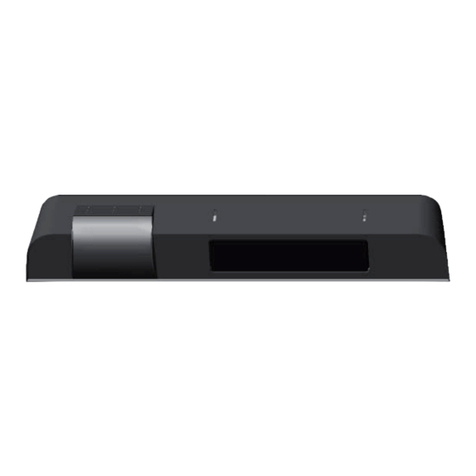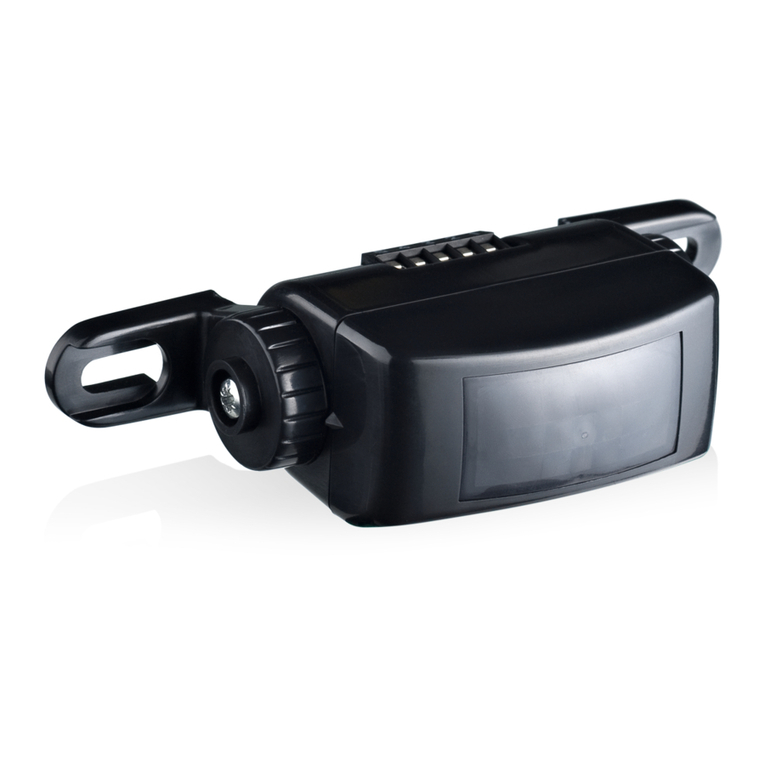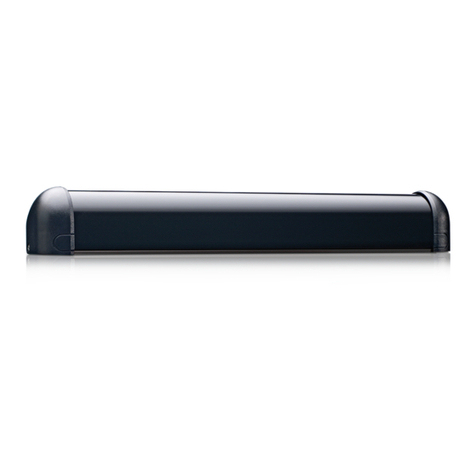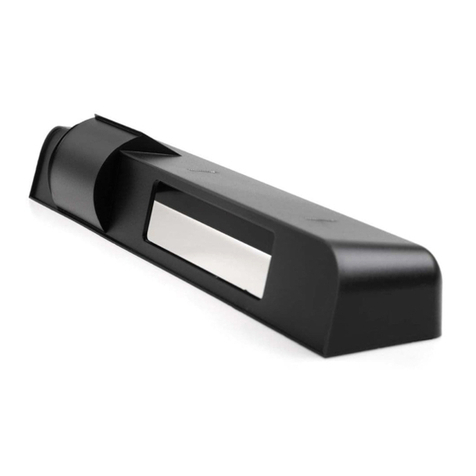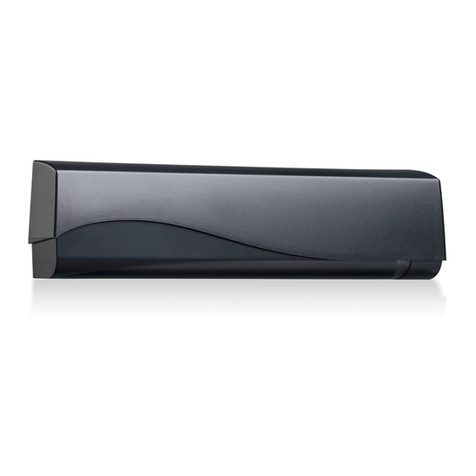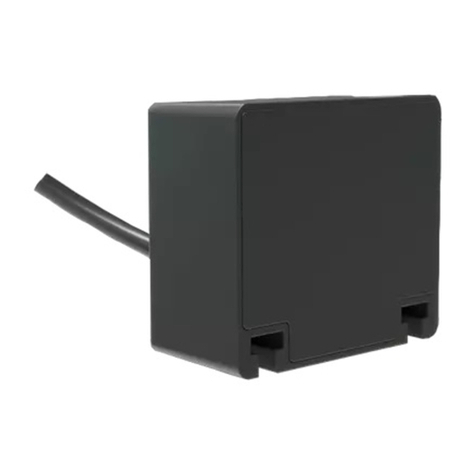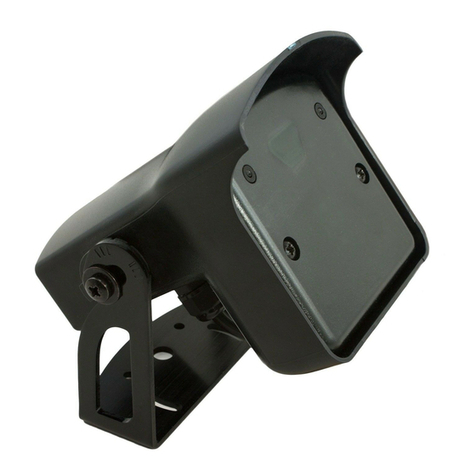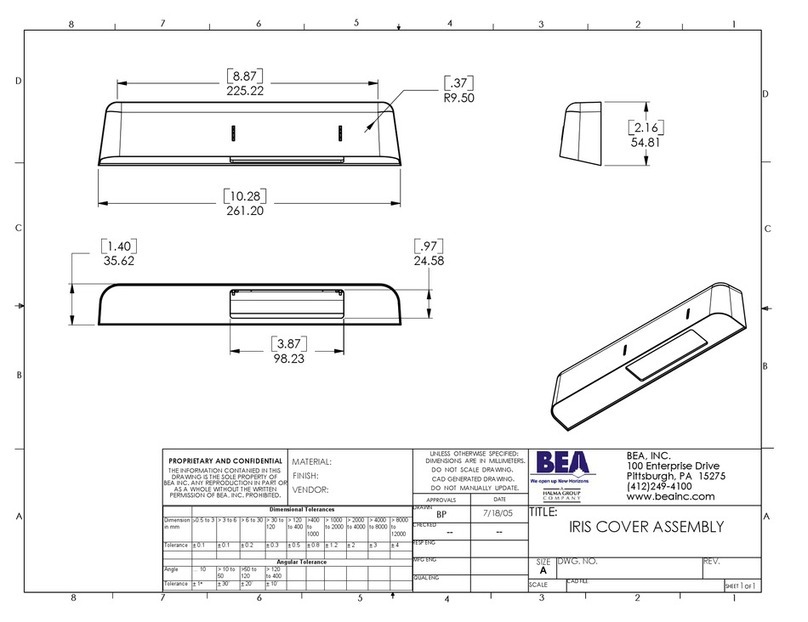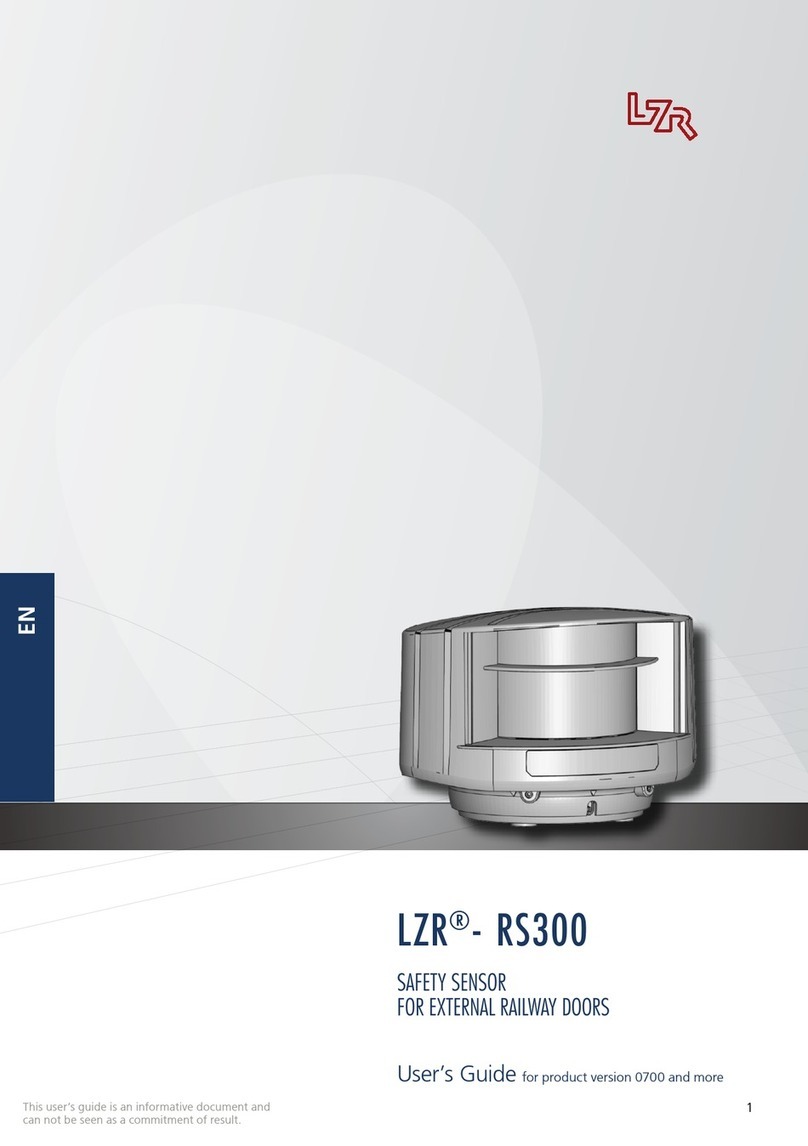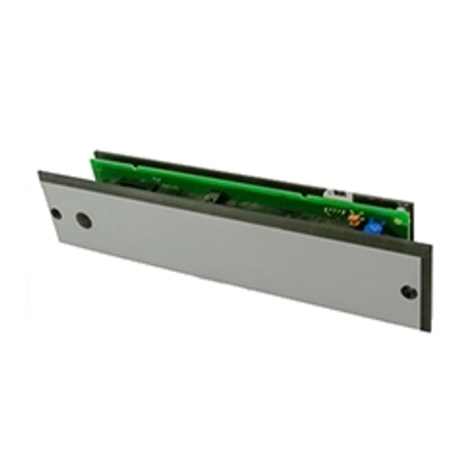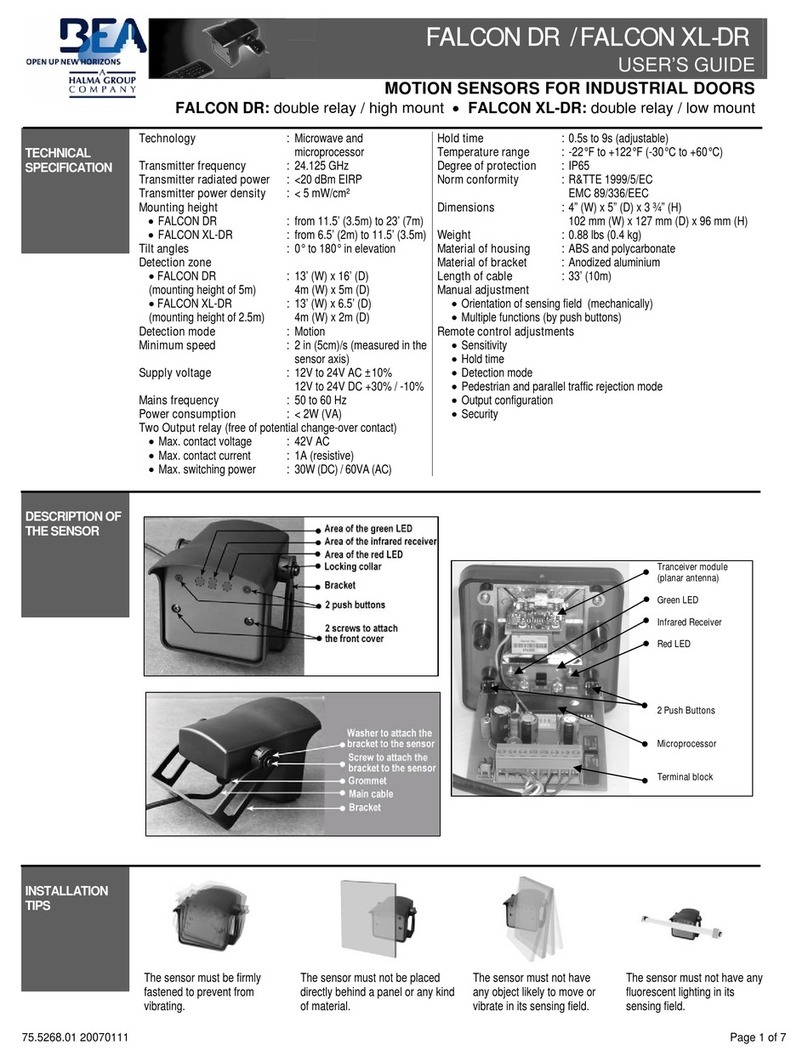
©BEA | Original Instructions
75.5644.09 R2E-100 20181009 Page 1 of 10
R2E-100
©BEA | Original Instructions
75.5644.09 R2E-100 20181009 Page 1 of 10
2 Specications
USER’S GUIDE
ACTIVE INFRARED, REQUEST-TO-EXIT SENSOR –DUAL RELAY OUTPUT
1 Description
DESCRIPTION SPECIFICATION
Detector Type Active, focused Infrared
Supply Voltage 12 –24 VAC/VDC ±10%, 60 Hz
Current Consumption 155 mA (sounder off) / 200 mA (sounder max volume)
Temperature -20 –120°F (-29 –49°C)
For UL Listed installations, the temperature range is 32 –120°F (0 –49°C).
Humidity 0 –93% non-condensing for ULC-S319 installations
0 –85% non-condensing for UL-294 Listed installations
Detection Distance (Range) Potentiometer adjusted from 20 –48”
Relay Two Form “C” contact sets
rated for 1.3A @ 24 VAC / 1.3A @ 30 VDC
0.6pf (Power Factor)
Relay Hold Time Potentiometer adjusted from 0.5 –60 seconds
Sounder 85 dB max with adjustable volume
Indicator LEDs Green, red, yellow, orange
REX Input DRY Contact, normally-opened (NO)
Card Reader Input DRY Contact, normally-closed (NC) – Can be disabled/enabled via DIP
Door Position Switch Input DRY Contact, normally-opened (NO) – Can be disabled/enabled via DIP
Dimensions 6 7/10” (W) × 2” (H) ×1 7/10” (D) (174.63 mm ×51 mm ×47.63mm)
Material Plastic (ABS and PC)
Housing Color Black
Wiring Interface JST (14-pin), 4’ cable
Certications UL/ULC 294/S319, FCC Part B
The R2E-100, including all peripheral accessories, is an active infrared, request-to-exit sensor for
applications located inside the protected premise. It is UL Listed as a request-to-exit device under the
UL 294 Standard and the CAN/ULC-S319 standard. The request-to-exit device is rated a “class 1” as
per the CAN/ULC-S319 standard.
The R2E-100 is designed to mount on or above a door header so that its detection pattern is placed
precisely in front of the door handle. In this scenario, when the user reaches for the door handle to exit,
the electronic locking (EL) device is released, and the person can exit. The active infrared detection curtain
of R2E-100 is well dened to keep the door secure, while rejecting parallel trafc and objects slid under the door.
The detection distance, or range, of the sensor is adjustable from 20 to 48 inches.
The R2E-100 Re-lock Mode can be selected to run in timer mode or door position mode. In timer mode, the relay hold-time will
control when the security device is re-locked, and it is adjustable from 0.5 to 60 seconds. In addition, the timer mode features selectable sub-
modes of operation, re-starting mode (the relay hold time will not expire as long as the sensor is in detection) or non-re-starting mode (the relay will remain active
for only the adjusted relay hold time). In door position mode, a door position switch connected to the door position switch input on the R2E-100 will control when
the door is re-locked. The door position mode also has an advanced re-locking feature that is selectable as 10 or 30 seconds. For instance, if the sensor has
gone into detection but the door has not been opened, the R2E-100 will re-lock the door and become secure again.
The R2E-100’s relay output consists of two Form “C” contacts that can be wired as normally-opened or normally-closed. Also, with the R2E-100, there is no
need for any additional surge protection in the wiring of the EL device to the relay, as surge protection is already built into the sensor. This built-in protection
eliminates the need for any additional components.
The R2E-100 also contains an alarm that can be activated to sound when the door is open or when the El device is released, depending upon the sensor’s
mode. The alarm’s volume can also be adjusted or turned off.
Finally, the R2E-100 provides for 3 DRY auxiliary inputs: a push button or other request to exit device, a card reader or other request to enter device, and a
door position switch.
